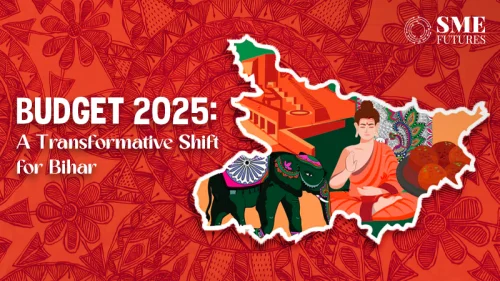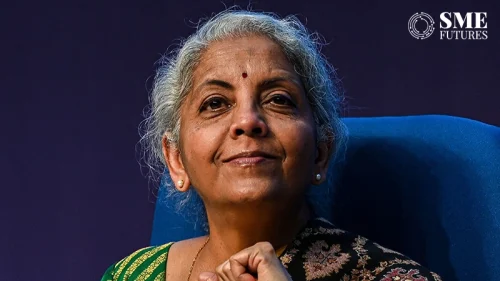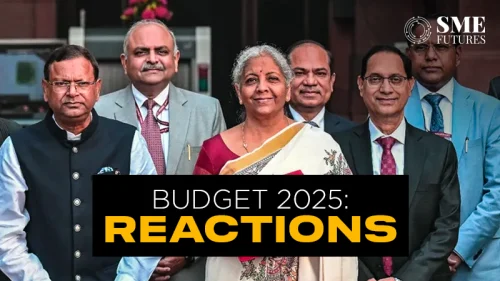On 27th February, India celebrated as PM Modi revealed the names of the four astronaut candidates for Gaganyaan—India’s first human spaceflight mission. Guess what, all of them are men. Not that I have any biases against them, but I would have loved to see at least one woman in that group. Then we would have called it true female inclusion.
But alas, let’s stick to where we are now and talk about the real problem—why are we still debating about having more women in the workforce, especially in leadership positions? Statistics from the National Stock Exchange reveal: only 100 out of 2000 listed companies are headed by female CEOs.
Despite advancements in women’s education and professional pursuits, the rate of female labour force participation remains stubbornly unchanged. This systemic issue presents a formidable obstacle to the advancement of women into leadership roles within corporate structures.
Discussing the issue with a few female entrepreneurs has been an eye opener and gives more perspective on this issue.
Aishwarya Jain, Co-Founder, Kirana Club, feels that while there’s been progress, India still has room to grow regarding female leadership representation at the CXO level.
“While it’s encouraging to see more women in leadership roles, the numbers remain significantly lower than men,”
My own experience has been a mixed bag. I’ve encountered supportive colleagues and mentors who value my contributions. However, I’ve also faced subtle biases and unconscious assumptions about my capabilities,” she says.
Ankita Isarka, COO of Thinkin Birds Communications has had a positive experience at the workplace, and she asserts that while the CXO suite still reflects a gender imbalance, the winds are shifting.
“I see more women than ever before in leadership roles, their voices shaping decisions and driving innovation. My own experience has been one of constant growth. Supportive colleagues and inspiring mentors have been instrumental in my journey, and I’m surrounded by a growing network of remarkable women leaders. Sure, challenges persist, and unconscious biases and ingrained norms linger. But the momentum is undeniable. With continued efforts, India Inc. is evolving into a space where diverse leadership thrives, and I’m excited to be a part of this positive transformation,” she asserts.
Female inclusion creates better society
Women’s inclusion is not just a matter of equality; it’s a catalyst for building a better society. As Cherie Blair—a barrister and women’s rights activists famously said, “When you empower a woman, you empower a family, a community and a nation.”
I strongly believe in the same. This ripple effect of empowerment finds a powerful illustration in the story of SEWA – the Self-Employed Women’s Association of India, spearheaded by the late Ela Bhatt, a pioneering figure in cooperative organising and activism.
Jain feels that promoting women’s inclusion leads to a better society for everyone. She believes that a diverse and inclusive workforce fosters innovation, creativity, and a richer understanding of different perspectives.
“When women are empowered to contribute their talents and leadership, it strengthens not only businesses but also communities as a whole. This benefits everyone, regardless of gender, by unlocking the full potential of our society,” she says.
Isarka too advocates for the same, saying, “Absolutely! Seeing governments and entrepreneurs invest in our empowerment gives me hope for a future where our voices, ideas, and contributions are heard and valued equally. It’s more than just resources; it’s acknowledging the potential we hold when given a fair shot.”
It’s about dismantling the barriers that hold us back from access to opportunities and to freedom from discrimination.
However, a collective effort is needed to bring in true inclusion.
But there are many challenges
Let’s look at a few numbers—In India, women account for only 22% of the workforce, lagging behind China at 40% and the United States at 47%. Furthermore, women hold a mere 11% of leadership positions in India, in stark contrast to 21% in China and 30% in the United States.
Clearly, the current level of female inclusion remains disheartening.
“The disparity is even more pronounced in the IT sector, where women are severely under-represented. In technology and finance, their presence in the workforce is limited to 15% and 25%, respectively,” says Aditi Balbir, Co-Founder, EcoRatings.
Another critical concern is the glaring gender pay gap, especially in leadership roles and CXO positions, where women receive 50% less compensation than their male counterparts.
To address these challenges, Balbir stresses the need for a concerted effort to increase the representation of women in the corporate sector and ensure gender inclusivity. She commends companies like Accenture for setting mandates to achieve a 50% gender ratio by the year’s end.
“Additionally, policies like the requirement for one woman director on every board contribute to creating a more equitable environment. However, further comprehensive measures and initiatives are needed to bridge the gender gap and promote a more inclusive and diverse corporate culture. Companies should prioritise implementing strategies that not only increase the overall representation of women in the workforce but also actively promote their advancement to leadership positions,” she says.
India Inc’s role is important
Indian firms, like those around the world, are increasingly being called upon to play a proactive role in properly integrating women into all fields of endeavour. This includes creating environments where women have equal opportunities to contribute their talents and perspectives, breaking down barriers to advancement, and celebrating the achievements of female leaders. In response to this call, many organisations are implementing various strategies to support gender diversity and inclusivity.
Both Jain and Isarka underscore the crucial role that Indian firms can play in integrating women across all fields.
Jain emphasises that creating a more inclusive environment involves implementing clear policies promoting equal opportunities, investing in mentorship programs for women, actively seeking diverse candidates for all positions, and celebrating the achievements of female leaders to inspire future generations.
“At Kirana Club, we’re committed to these principles. We have a diverse team with a strong female presence across functions. We celebrate the achievements of all our employees, regardless of gender,” she says.
Isarka echoes this sentiment, expressing her excitement about Indian firms embracing diversity and actively integrating women into all fields, not just as a moral imperative but as a strategic advantage.
“My organisation, for instance, champions this wholeheartedly. We have implemented flexible work arrangements that cater to diverse needs. We also actively seek out female talent for leadership positions, recognising the unique value that they bring to the table. It’s inspiring to see these efforts translate into a more inclusive and dynamic work environment, where women can thrive and contribute their best,” she avers.
As Indian firms prioritise gender equality, they not only empower women but also propel themselves to greater success. This collective effort towards inclusion signifies progress towards a society where everyone, regardless of gender, can thrive. Recognising and valuing women’s inclusion isn’t just about equality; it’s about creating a brighter future for all. Let’s continue this journey towards a more inclusive and equitable society.











